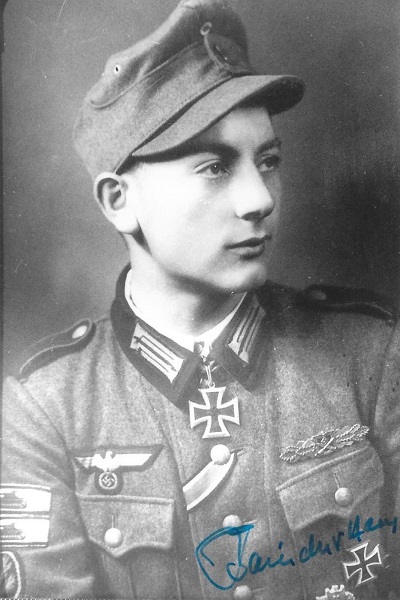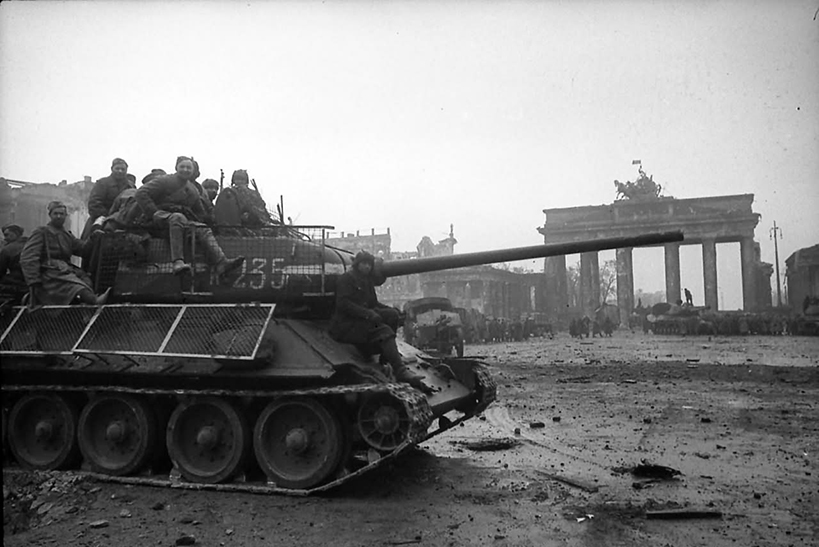Baindner, Hans
- Date of birth:
- January 30th, 1924 (Kaufbeuren, Germany)
- Date of death:
- May 9th, 2003 (Kaufbeuren, Germany)
- Nationality:
- German
Biography
Do you have more information about this person? Inform us!
- Period:
- Second World War (1939-1945)
- Awarded on:
- March 1st, 1944
- Period:
- Second World War (1939-1945)
- Awarded on:
- April 2nd, 1944
- Period:
- Second World War (1939-1945)
For T34, destroyed with Panzerfaust on the early morning of 9th April 1944.
- Period:
- Second World War (1939-1945)
For T34, destroyed with Panzerfaust on the early morning of 9th April 1944.
- Period:
- Second World War (1939-1945)
- Rank:
- Gefreiter (Lance Corporal)
- Unit:
- MG-Schütze, 11. Kompanie, III. Bataillon, Jäger-Regiment 228, 101. Jäger-Division, Heer
- Awarded on:
- June 24th, 1944
Recognizing the gravity of the situation, Gefreiter Baindner decided to take out both of these T-34s. Armed with only a Panzerfaust, he worked his way through the escorting Soviet infantry up to the tanks. Baindner finally destroyed the first T-34 on his third attempt, and the force of the explosion caused the crew of the other vehicle to panic and bail out (this second tank would fall into the hands of the Kompanie in an undamaged and drivable state). This brave action emboldened his comrades to go over to the attack, and over the course of the day the Regiment was able to eliminate the entire Soviet Uscieczko bridgehead down to the last man.
Baindner would subsequently receive the Knight’s Cross for his actions here.
- Period:
- Second World War (1939-1945)
- Period:
- Second World War (1939-1945)
Sources
- Photo 1: Known to STIWOT
- - HUß, JüRGEN & SONDERMANN, HEINZ-WERNER, Ritterkreuzträger im Mannschaftsstand 1941-1945, VDM Heinz Nickel, Zweibrücken, 2009.
- THOMAS, FRANZ & WEGMANN, GüNTER, Die Ritterkreuzträger der Deutschen Wehrmacht 1939-1945, Biblio-Verlag, Osnabrück, 1987.
- Bender R.J., Breyette T., Tank Killers, RJ Bender Publications, 2000, ISBN 0-912138-83-1
- Fellgiebel W.P., Elite of the Third Reich, The recipients of the Knight's Cross of the Iron Cross 1939-1945: A Reference, Helion & Company Limited, Solihull, 2003, ISBN 1-874622-46-9
- Axis History Biographical Research via Axis History Forum









